Contents
Berlin, April 1–10, 2022
Alone/Together explored pandemic isolation, belonging, and connection. It featured collective soliloquies between members of Bloom, a group who found each other across borders and boundaries during the loneliest periods of lockdown. An i-Portunus Houses grant made gathering and co-creating possible for the EU-residents of the Bloom Collective.
The Process
We gathered at a shared accommodation in the German countryside for a one-week maker retreat. We spent 12-18 hours every day together, sharing meals, laughing, reflecting, crying, and furiously writing and recording countless emergent ideas. We began with our theme, and considered a variety of methods through which to gather, analyze, display, and interpret the array of raw art and data we had each collected over the course of the pandemic. We brought laptops and pianos, projectors and guitars, neurofeedback games, poetry anthologies, and many, many books, journals, and hours of audio and video-recorded material. We combined our expertise in visual art, writing, data science, neuroscience, programming, and behavioural science to turn 3 years of self-reflection into a collective set of art-science artefacts that reflect our singular and collective experience.
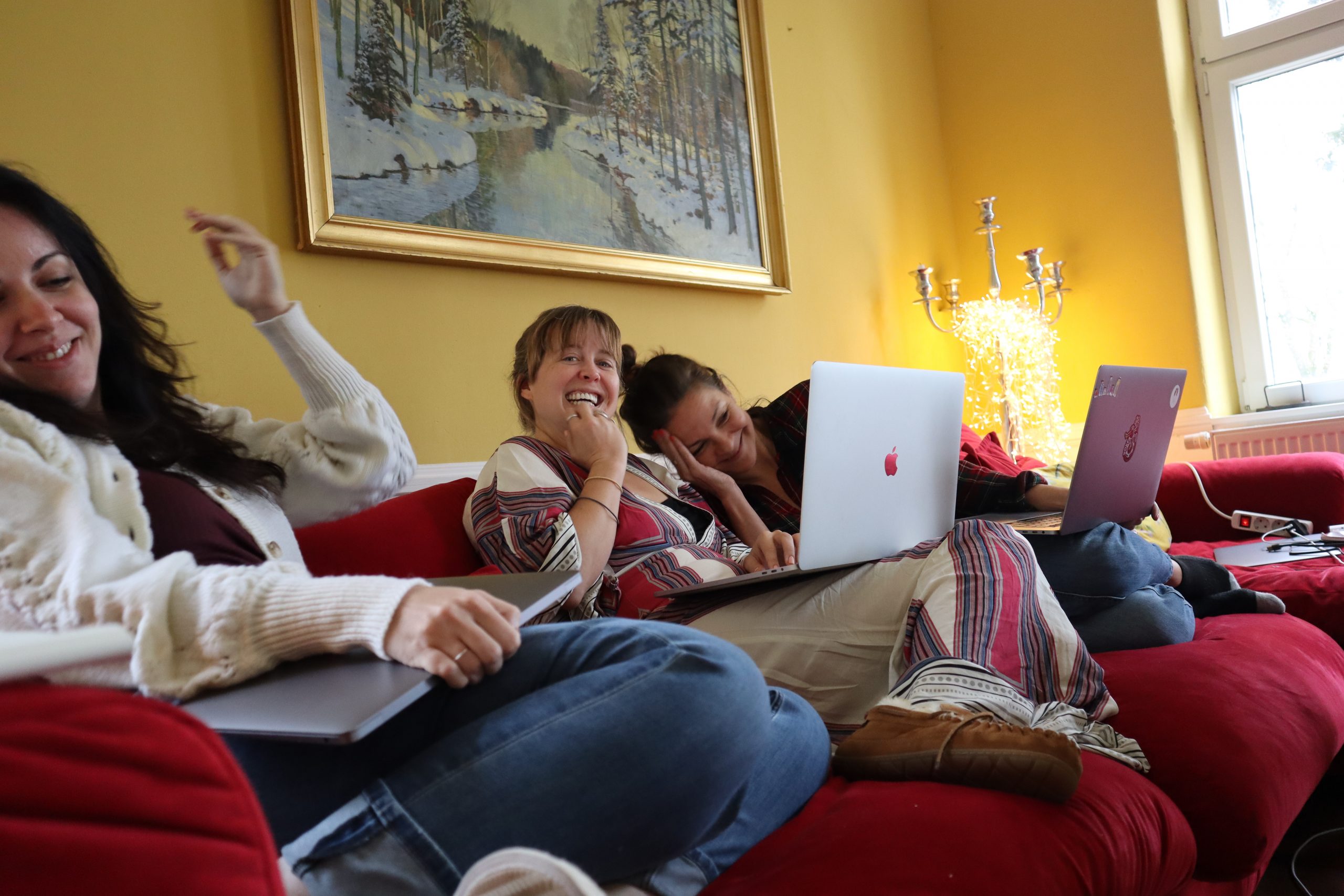
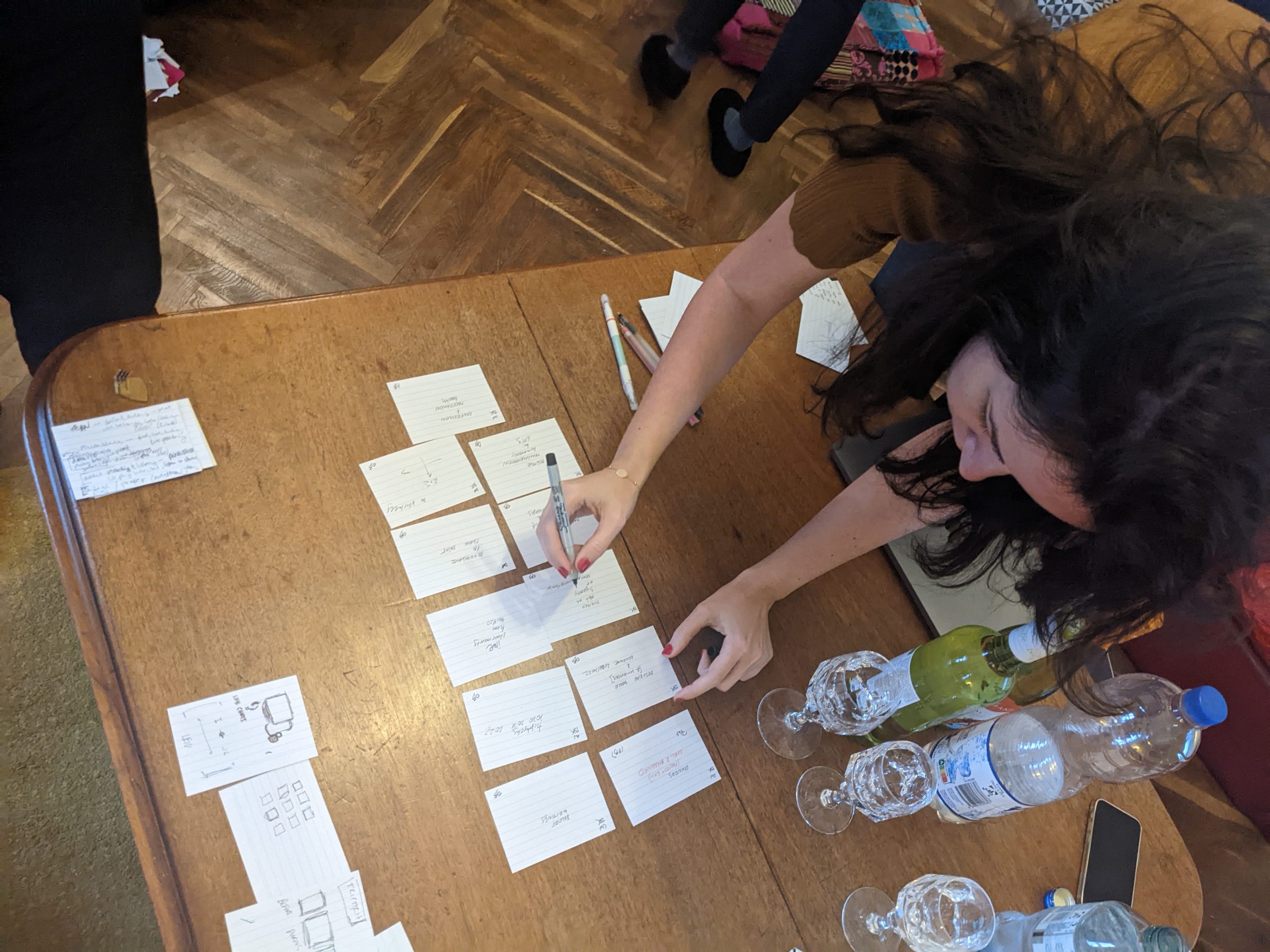
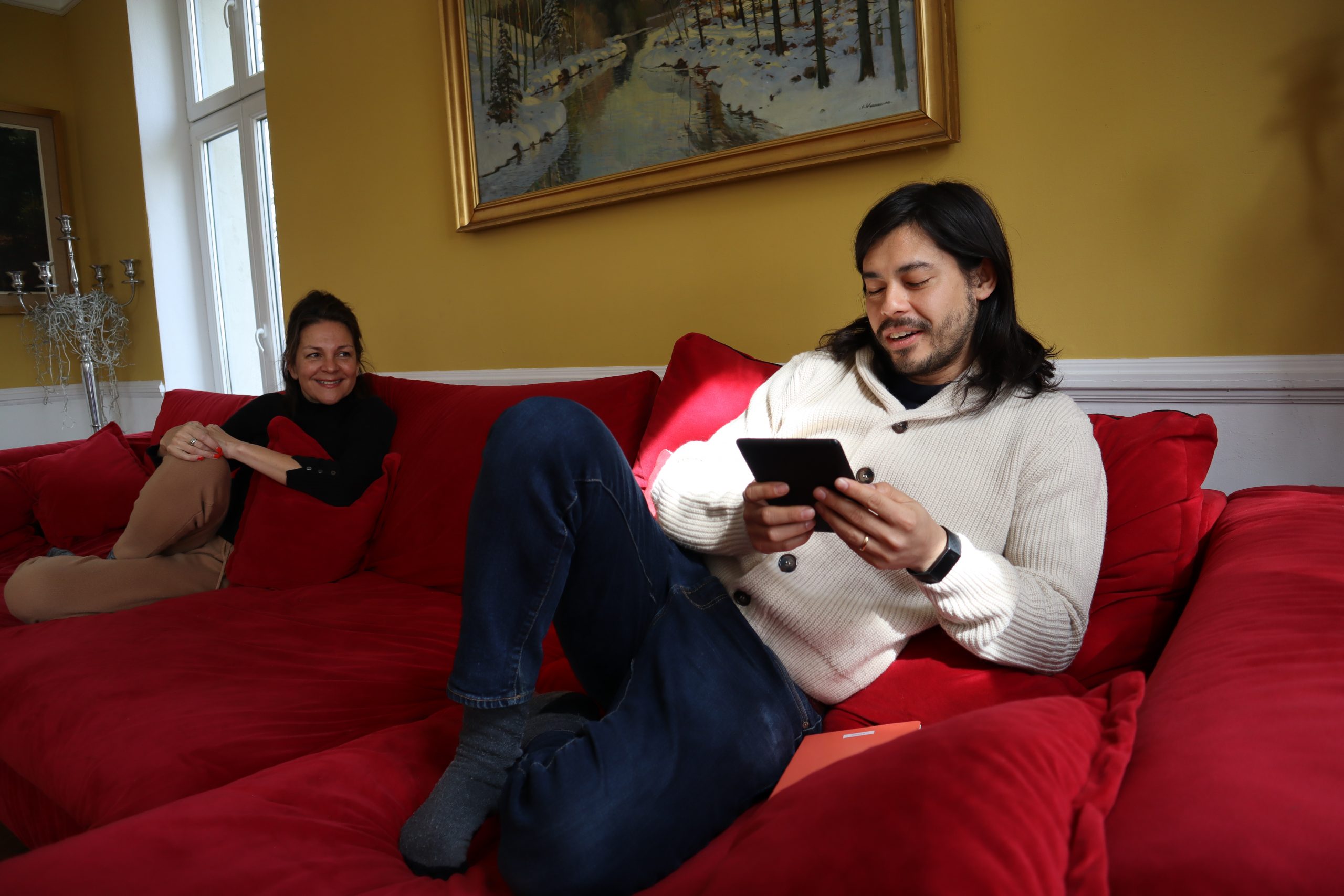
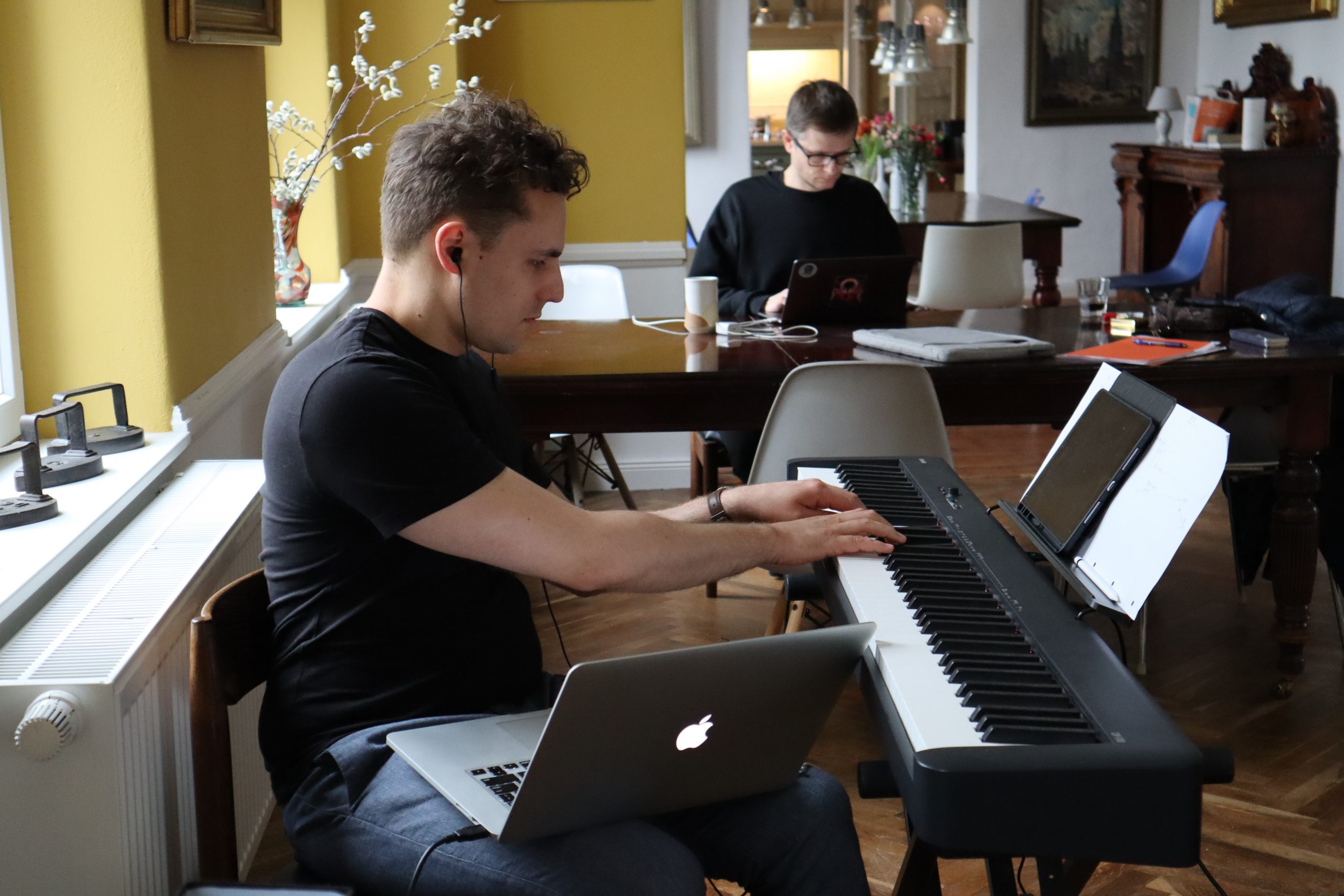
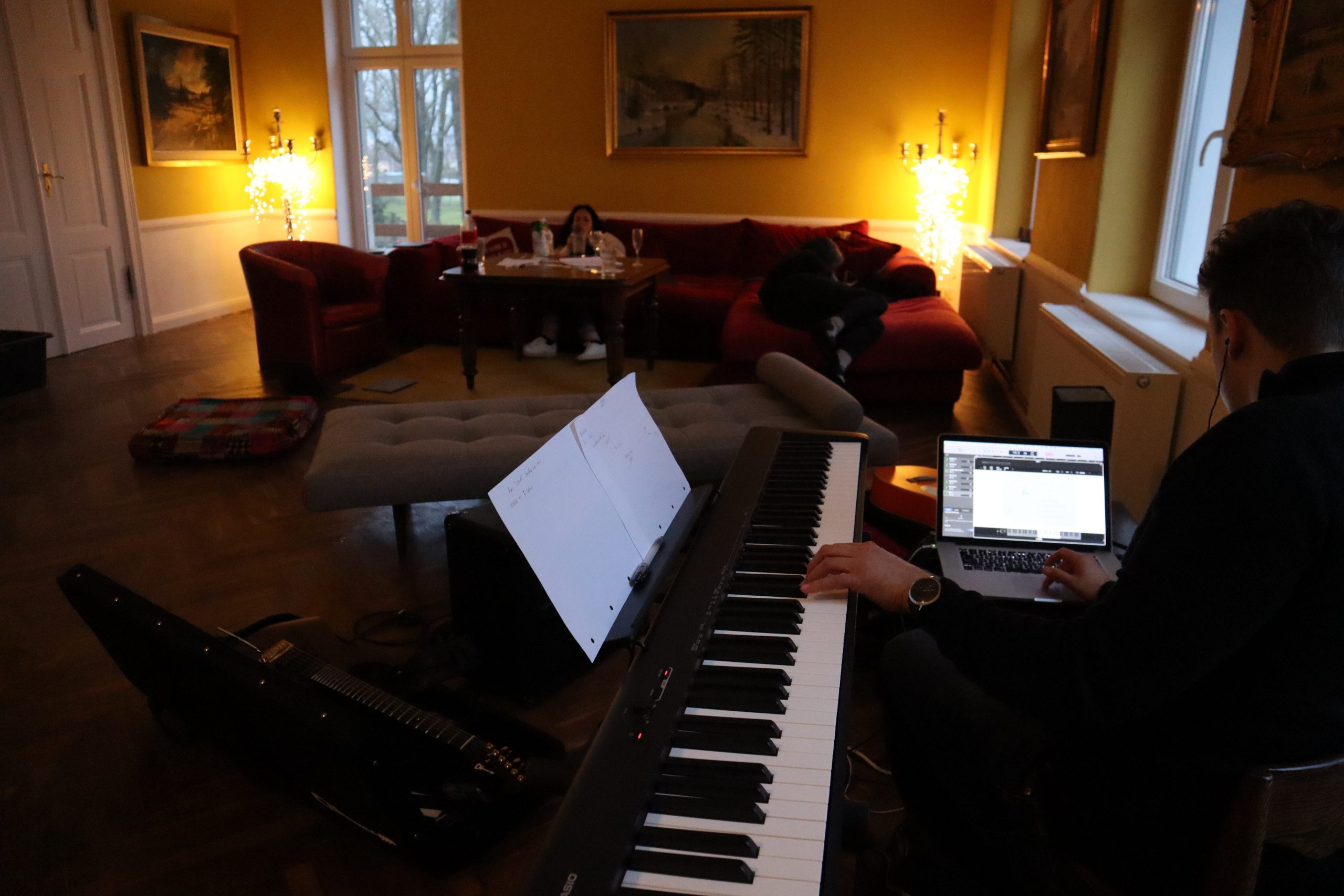
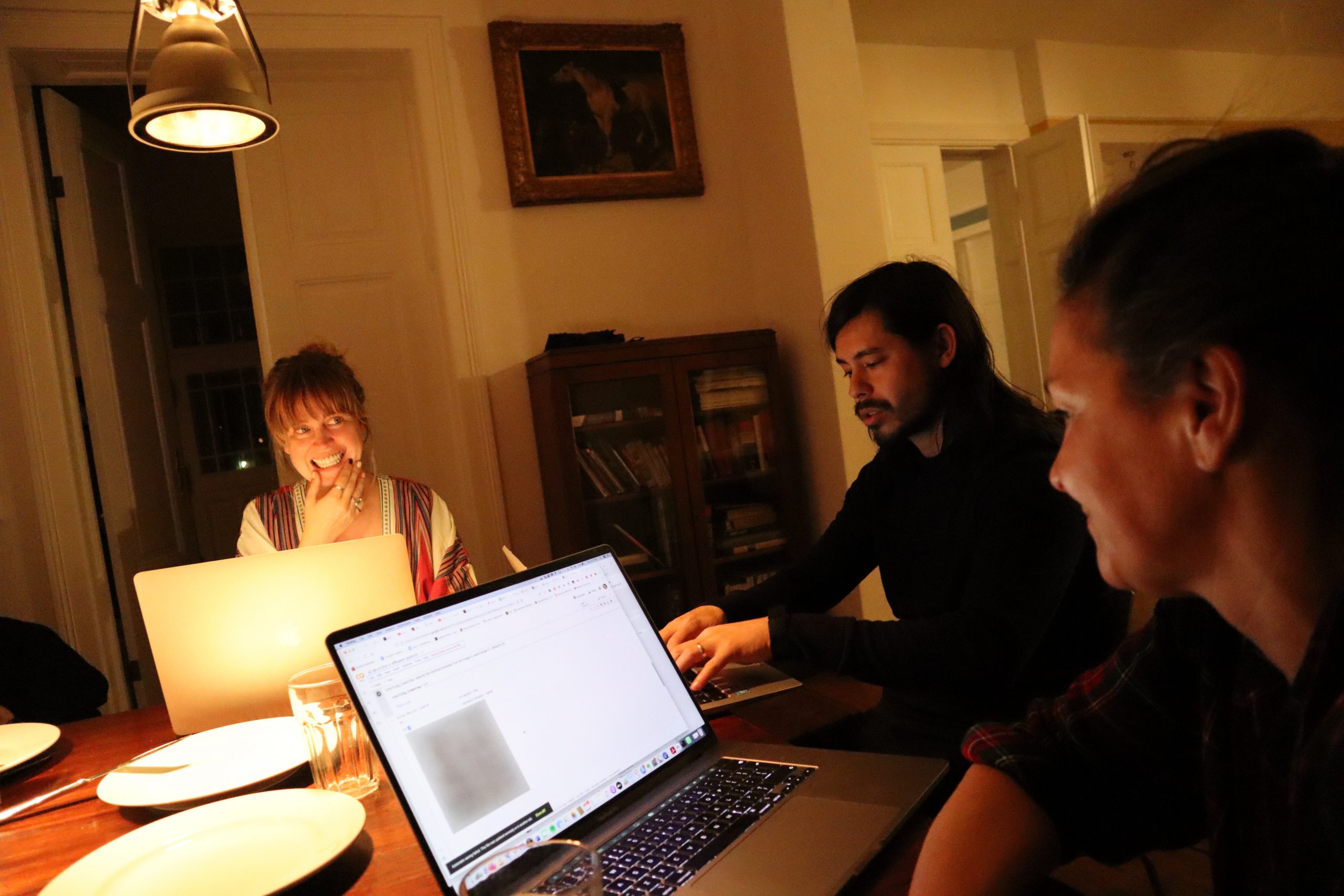
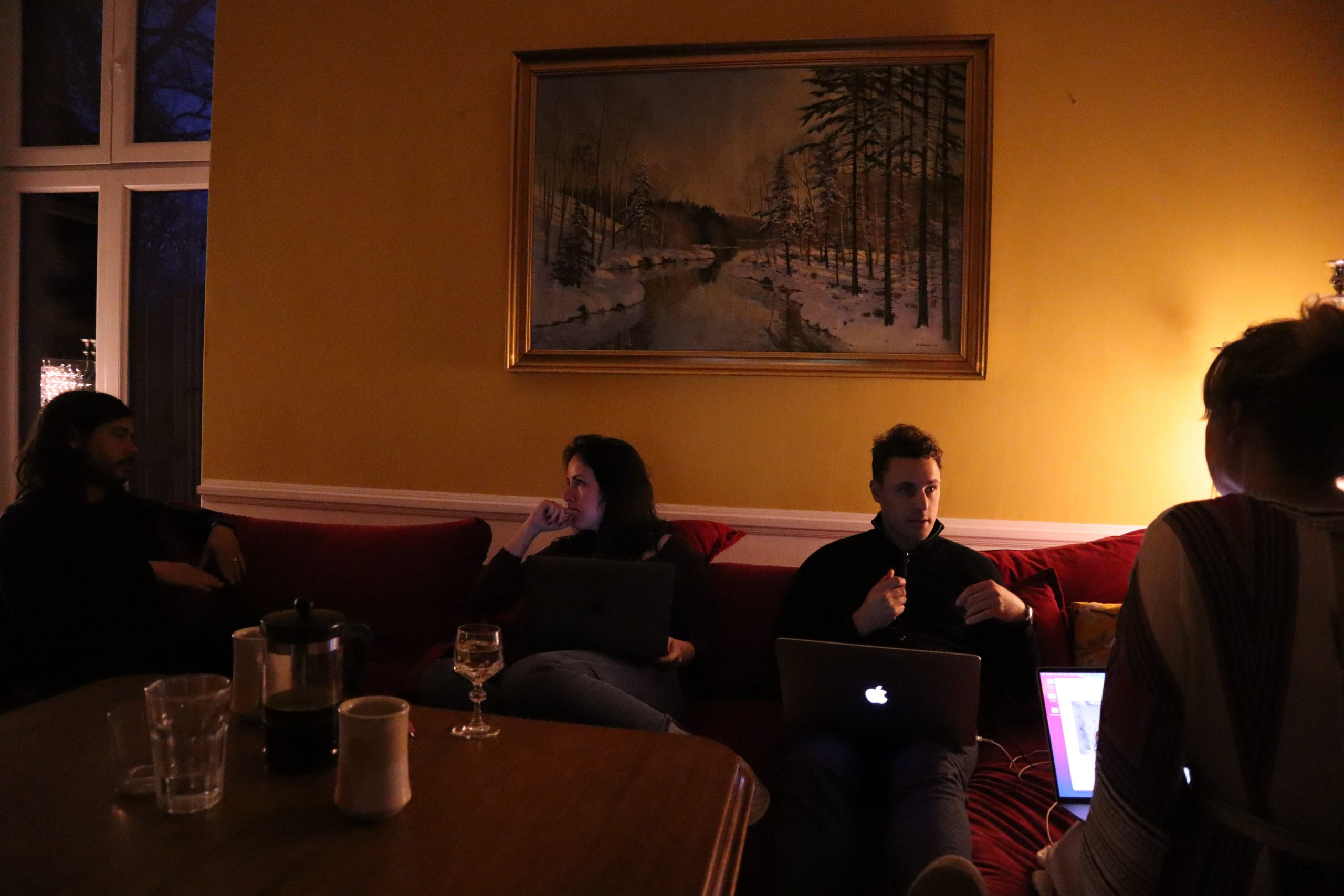
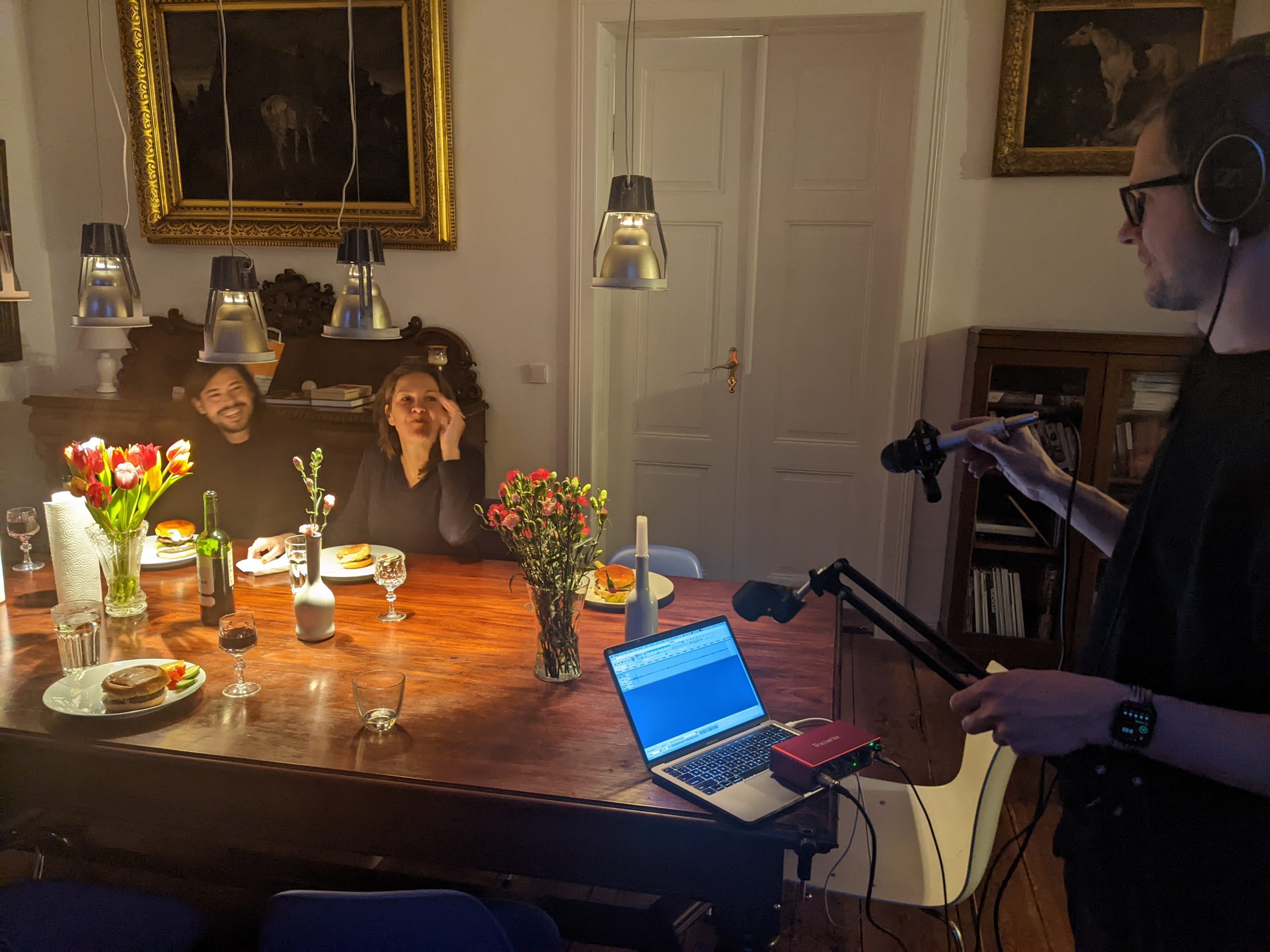
The Art
Over the course of seven days, the Bloom collective developed six installations exploring the concept of isolation, belonging, and connection. In Gallery 1, we visualized personal narrative and our individual, emotional experiences of the pandemic. In Gallery 2, we explored digital connection during those days of intense isolation, uncovering data about our relational and conversational patterns with loved ones across distance. In Gallery 3, we reflected on belonging, then and now, building a full-sensory dinner party in which guests were invited to participate and enjoy.
Gallery 1: Visualizing Our Personal Pandemic Experience
Encountering Ourselves: Pandemic Triptychs
User research, data analysis & visualization, CLIP+Diffusion-cc12m.
How have the pandemic years changed us? What has emerged in our lives, hearts, environments? Who are we becoming? These individual triptychs explored our personal experiences of 2020, 2021, and 2022. With each Bloom member, we collected five words they would use to describe their experiences of each year. We then synthesized these words into common scales of experience, around 5 emerging themes: sense of creativity, sense of freedom, sense of embodiment, sense of connection, and emotional valence. Using these scales to set a common language baseline, we created a script for CLIP+Diffusion-cc12m. Returning to each Bloom member, we had them place themselves on each scale, for each year, to generate a unique script. Finally, we asked each Bloom member to select an artist whose works most evoke their emotional experience of the last three years. The result is an aesthetic blend of art & data — a set of 8 deeply personalized, unique triptychs, each evoking a Bloom member’s first-person experience of the pandemic.
Becoming Bloom: Collective Triptych
Collective autoethnography, CLIP+Diffusion-cc12m.
This triptych explores the dynamic emergence of our collective, from our earliest conversations over WhatsApp and Zoom in 2020, to our first meeting and deepening friendships in 2021, to our present-day collaboration and creative collective in 2022. In collecting data and visualizing our individual experience, and watching our triptychs develop in sequence, a common thread emerged: That of a collective experience of loneliness developing into belonging and a renaissance of creativity. Using CLIP+Diffusion-cc12m, and reflecting on the data collected for our individual triptychs, we together chose words that evoked our experiences: first, encountering each other in a time of loneliness and alienation (left, 2020), second, beginning to witness, see, and support one another through seasons of flux and rebirth (center, 2021), and third, building a pattern of support for each other (right, 2022). What emerged was a machine learning-generated triptych of our collective experience, becoming Bloom.
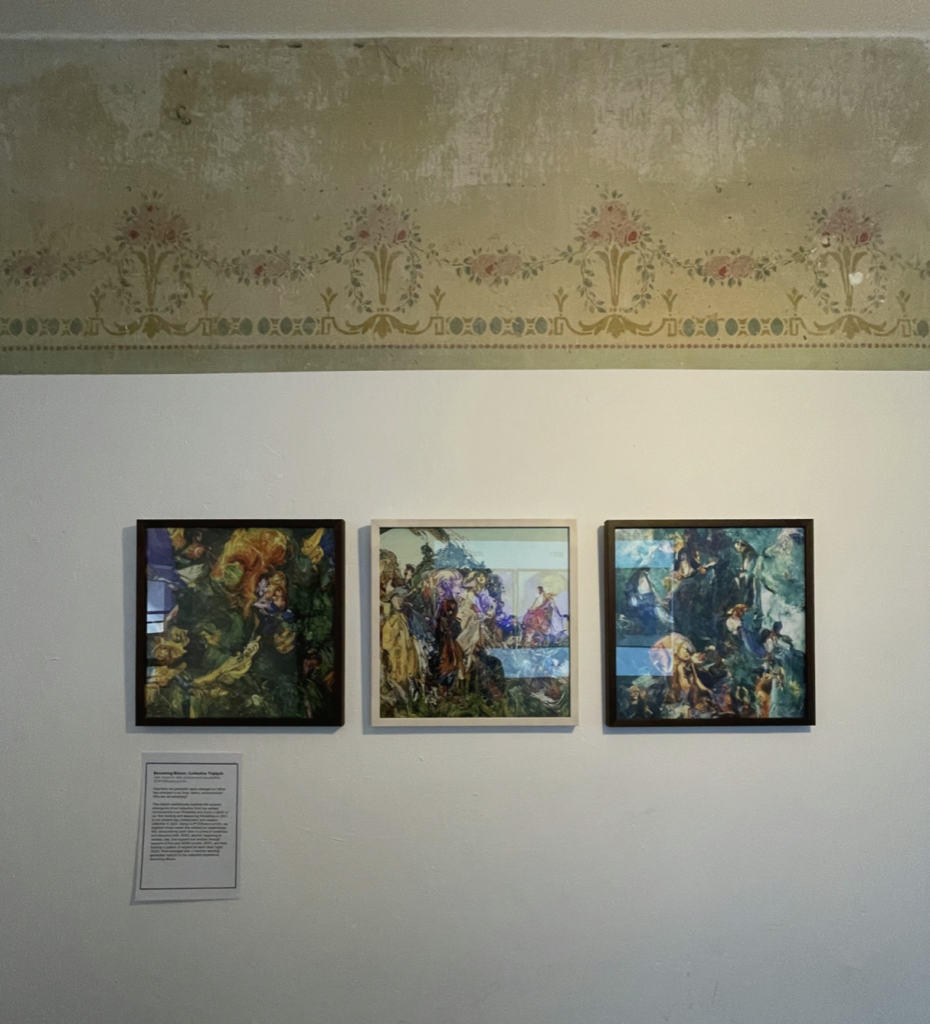
Gallery 2: Digital Connection in a Time of Isolation
Finding Our Voices / Vocal Chords
Original composition. WhatsApp voice message archive, 2020-2022, keyboard, mixer.
During the pandemic, one of the members of Bloom Collective began sending voice notes to others, who responded in kind. We sent over 200 hours of voice messages to one another. These series of soliloquies often escalated and lengthened in ways unexpected even to their speakers.
This collective audible work is a representation of pandemic isolation, discovery, and subsequent connection and belonging, featuring original music and samples from personal inter-Bloom voice messages and original composition and mixing.
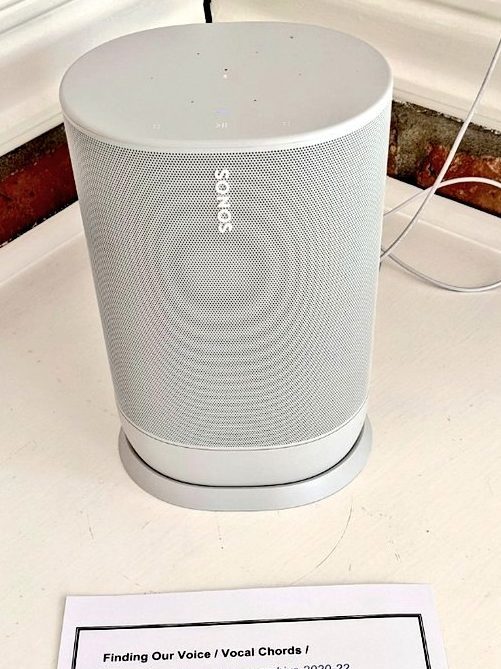
Scatterchat
Python code, plotly.
This graph is an experiment in visualizing how communication patterns changed over the course of the pandemic.
The full chat history of several Bloom members has been exported and visualized as a scatter plot. Each recipient is represented by a separate coordinate on the vertical axis, and each week is represented by a coordinate on the horizontal axis. A dot on the plot means that at least one message was exchanged with that contact on a given week.
Exploring the plot reveals a few distinct patterns — for example, the regular communication with an individual throughout the whole period, which appears as a horizontal line. New connections appeared during the pandemic isolation period. Certain spikes of communication activity appear as vertical lines across contacts — on winter holidays, or the end of February 2022, when the Russian invasion of Ukraine began.
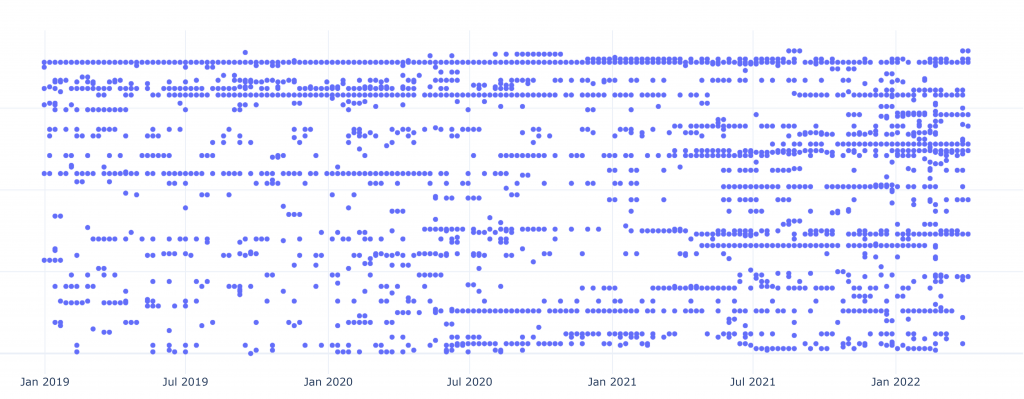
Gallery 3: Gathering and Belonging
Breaking Bread
Photography, audio recording, physical dinner party.
This table and these photographs represent an invitation to find small pockets of belonging in our daily lives. Setting a table is an invocation, a preparation, eliciting the expectation of an imminent connection. The sharing of meals is one of the oldest and most important rituals of humanity still practiced. Cooking together and conversing over meals is also one of the few true universals that cross all cultures. Breaking and sharing bread conveys a sense of abundance and connection.
In 2020 and the years that followed, these rituals were fragmented, fractured, or entirely destroyed, as we retreated into our digital world. As we (sometimes fitfully) re-emerge to take our place at the table once again, we pause to reflect on what we lost, whom we have found, and what we hope for the future.
Around this table, we played recordings from dinner parties past, showcasing the act of collaborative creation that is cooking and serving food together, as well as the swift vacillations between the humour, seriousness, and intellectual discussions that combine in a dinner conversation. We invited guests to break bread with us, join a conversation, or simply pull up a chair and listen in.
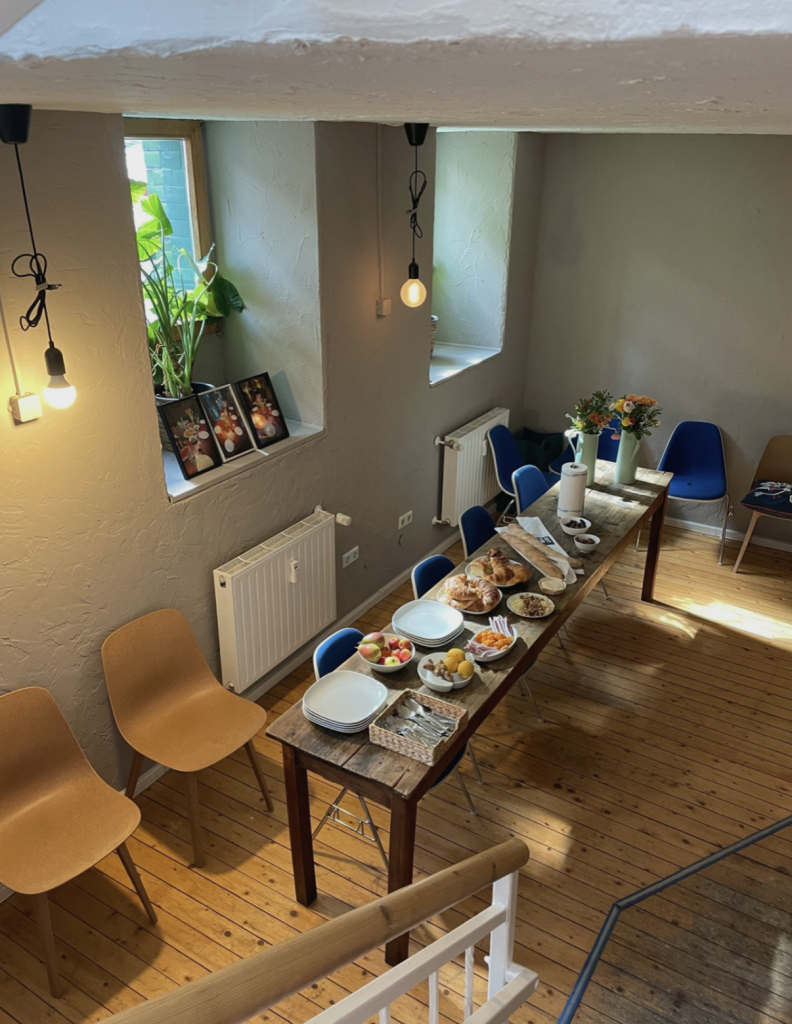
These Dinners Do Not Exist
DALL-E, GPT-3.
I make art about dinners. I create dinners that never existed before, and will never exist again. I use artificial intelligence to generate the recipes for these dinners, and to choose the ingredients. I use machine learning to create the menus for these dinners, and to choose the dishes. I use data mining to find recipes and ingredients from all over the internet. I use computer vision to create the images of these dinners. I use natural language processing to write the artist statement for this project.
(Statement by GPT-3. “These Dinners Do Not Exist” is a series of images generated by a neural network trained on images of different dishes.)
The Exhibition
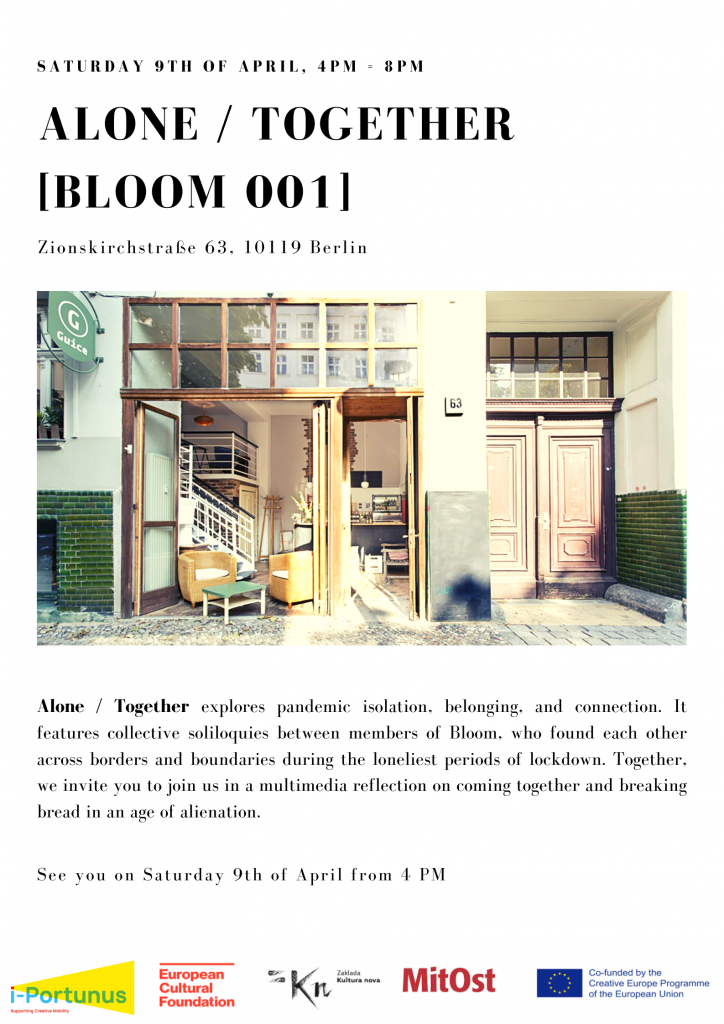
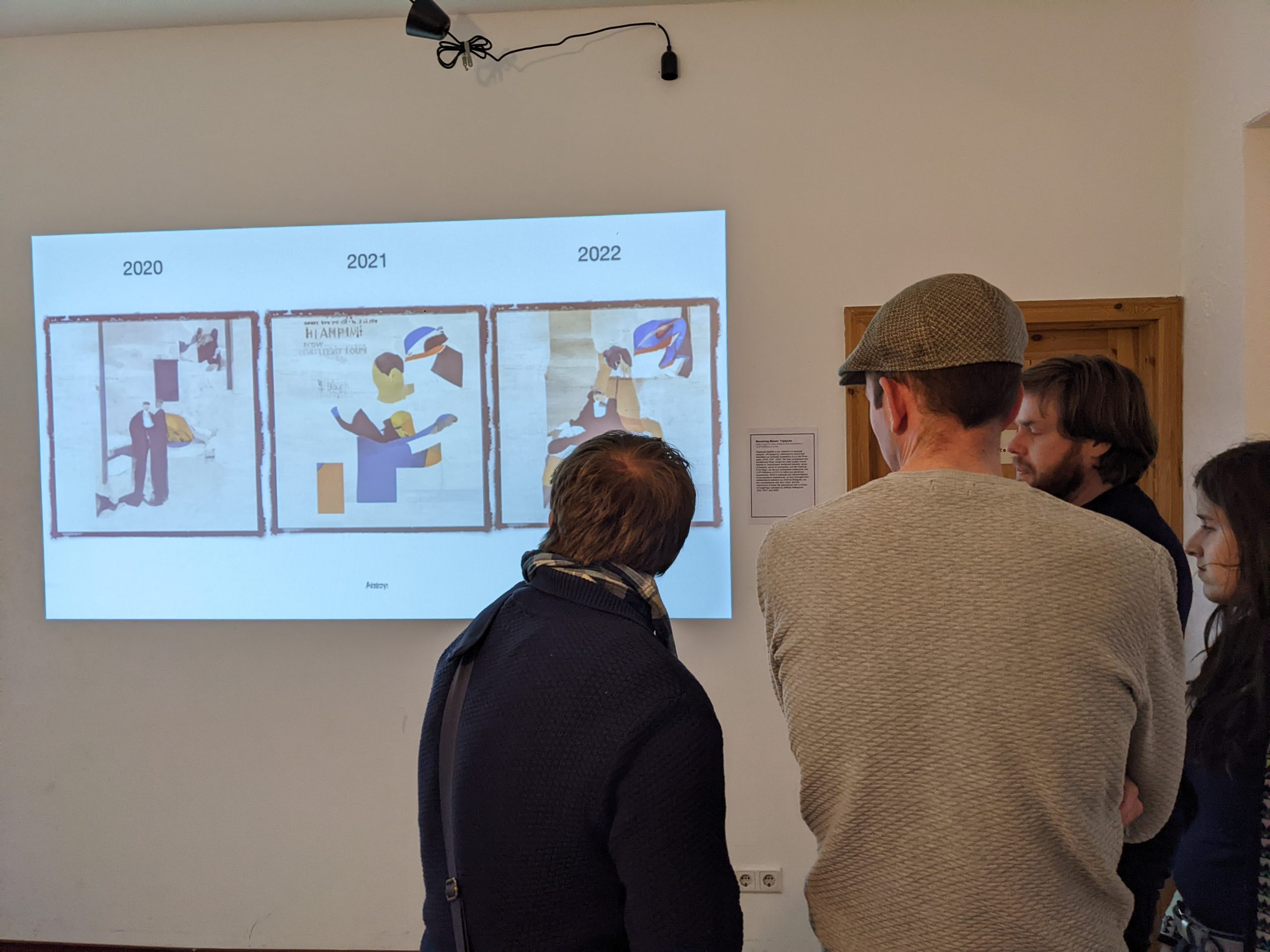
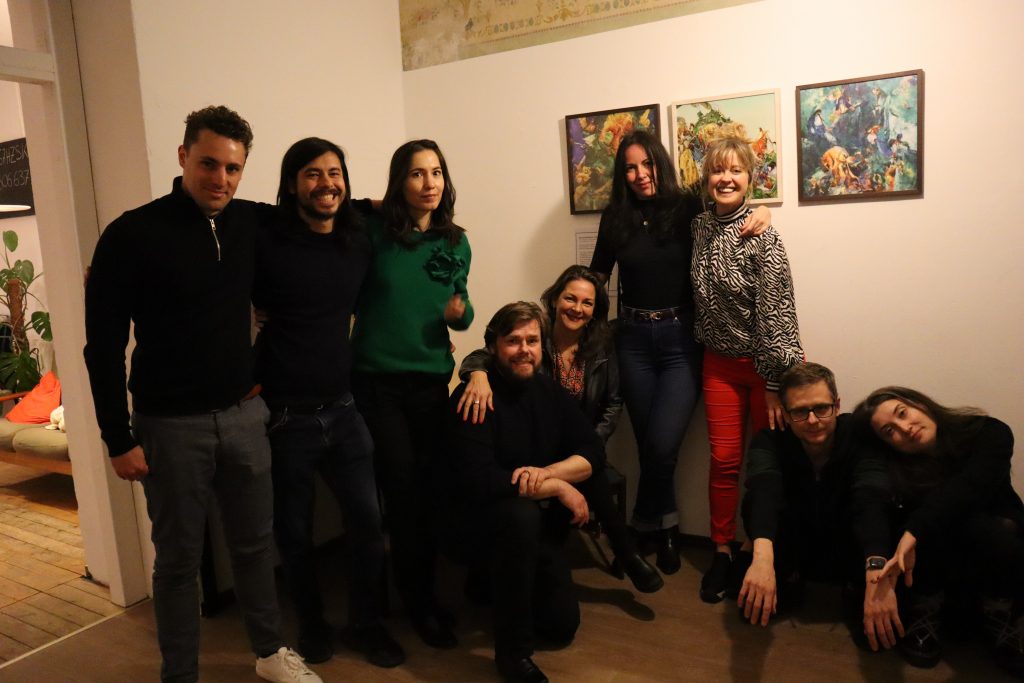
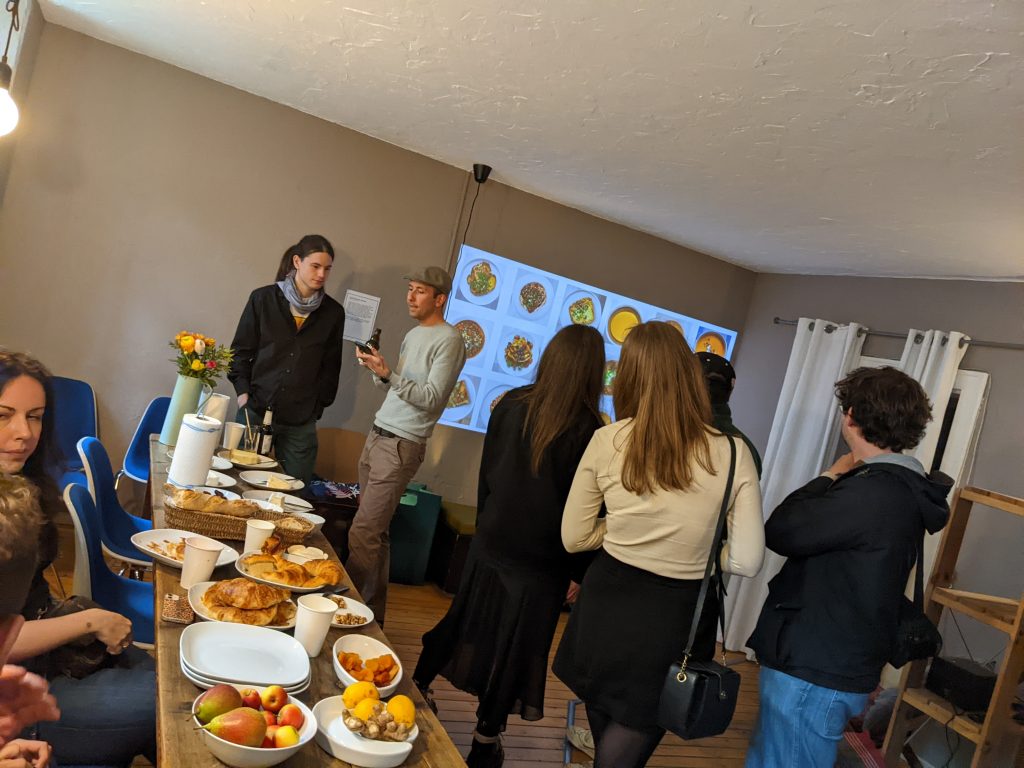
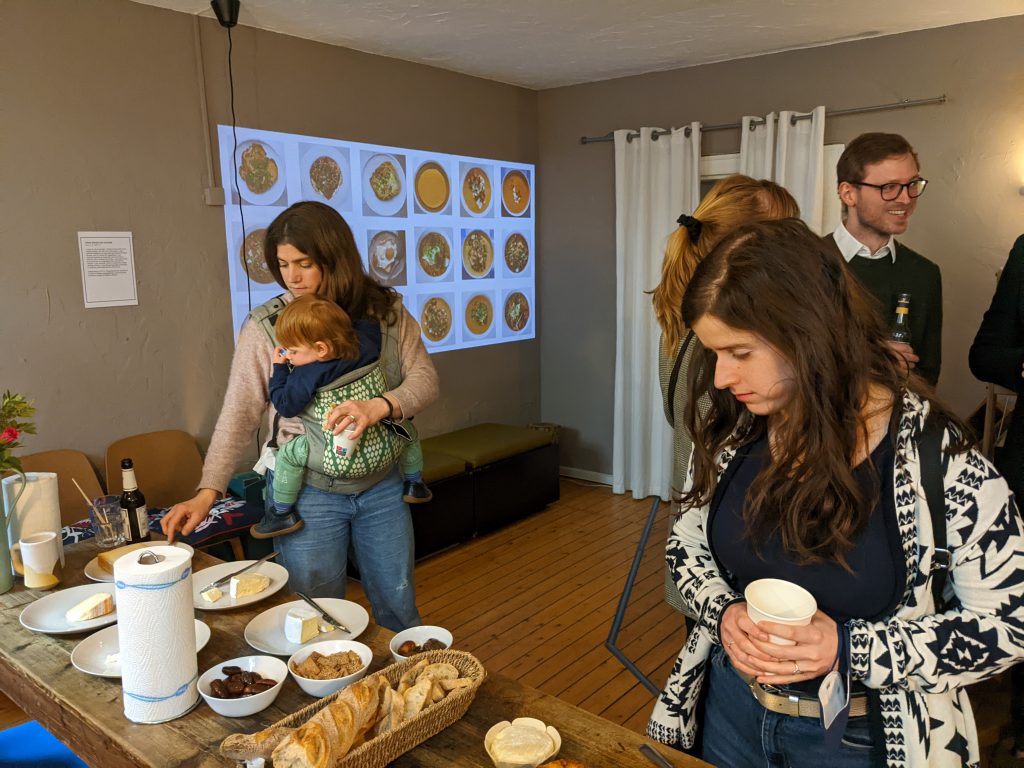
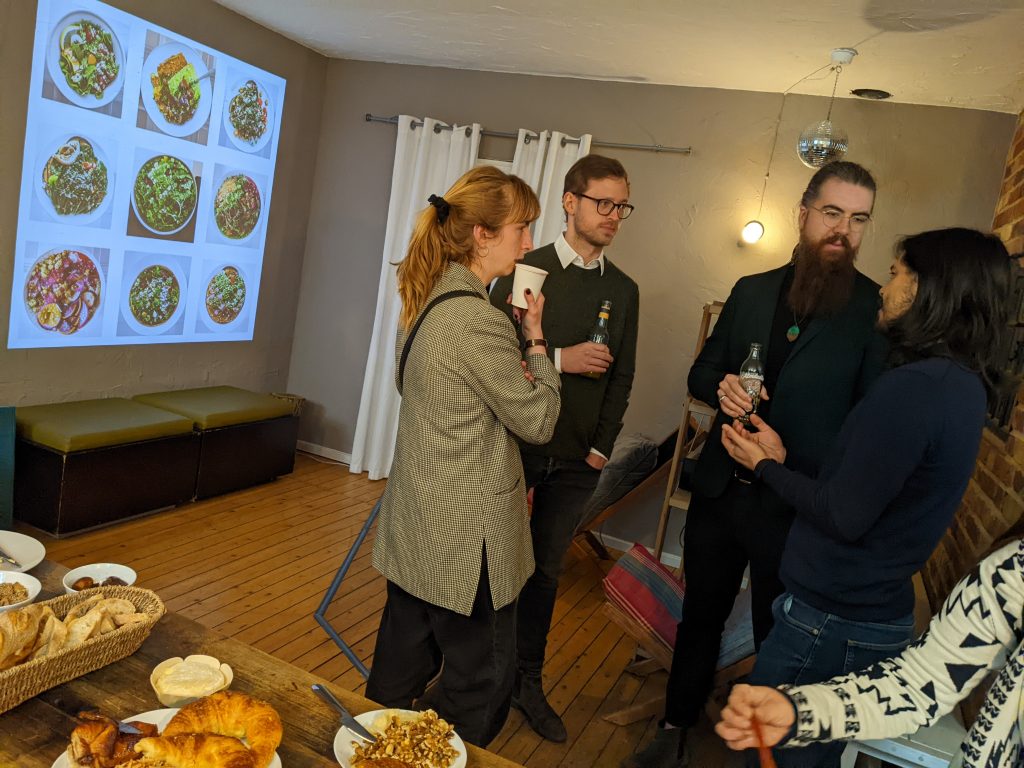
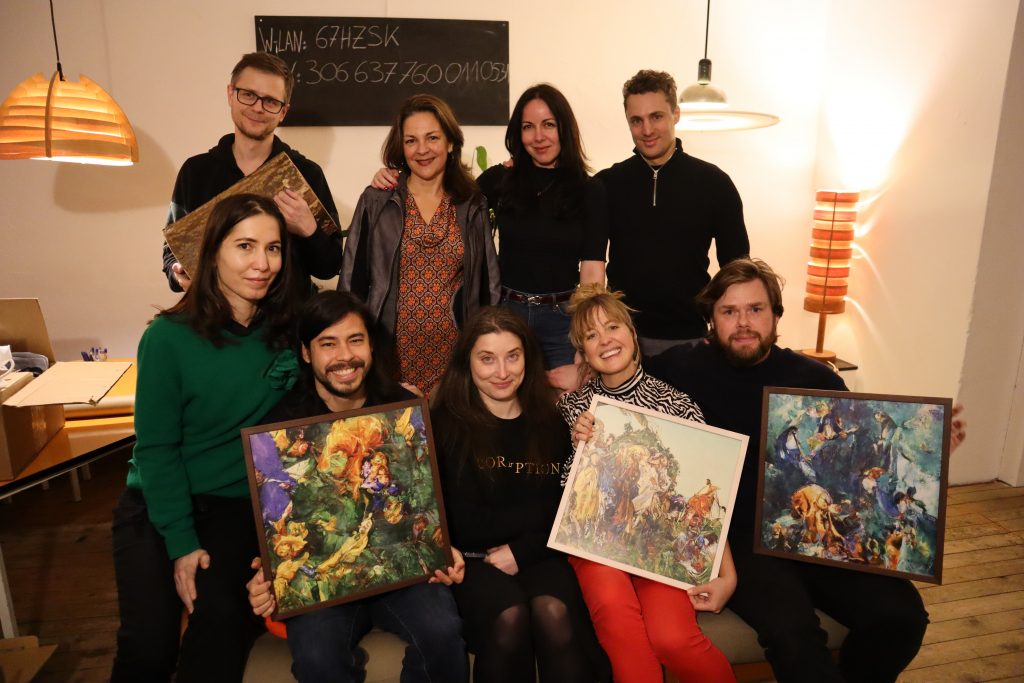
Artist Reflections
Patricia Hurducas
Bryan Kam
Harry Ramsay
I am a musician and data analyst, hailing from the UK but currently based in The Netherlands.
Being part of the Alone/Together collaboration reminded me how vital it is to collaborate face-to-face. For one, meeting in person allows for a more organic flow of ideas. When you’re in the same room as someone, it’s easier to build off each other’s ideas and have a back-and-forth conversation — to challenge ideas, extract inspiration, push further out of your comfort zone. Body language matters.
Another benefit of in person collaboration is that it can help to build trust. When you’re working face-to-face, you’re able to get to know one another in an embodied, emotionally honest way, making it easier to build trust. One can give feedback in an easy, non-defensive way and, also, one can receive feedback and criticism with ease and openness when we feel safe in person.
Trust that’s built in person, in turn, makes sharing half-formed ideas and difficult emotions feel safer and makes the work in the end better for it being powered by vulnerability and connection.
Finally, meeting in person can simply be more fun. There’s no doubt that the pandemic has made it difficult to connect with people, but there’s something joyful, surprising, and necessary about being in the same space as others, creating together during both happy and stressful creative periods. This makes mobility grants (like those offered by i-Portunus!) an increasingly valuable option in an increasingly unpredictable world.
The future of mobility is likely to be dominated by digital technologies. With the advent of 5G and the Internet of Things, we will see more and more devices connected to the internet, and this will make it easier for people to connect with each other and to share information for collaborative work. However, there is still no substitute for face-to-face interaction. It is this mobility that allows us to build trust and to establish and build deep personal relationships, which are essential for creating meaningful collaborative art. In contrast to digital collaboration, it is only in-person collaboration which allows us to create truly serendipitous encounters and to have those “eureka moments” of creativity.
Because we also put on a physical exhibition in a local art gallery, we were better able to integrate with local communities in Berlin by inviting people to our events and by engaging with them in person. Our exhibition would not have been possible without the mobility of our team members, who came from all over Europe to work on the project – and indeed, many of the attendees were residents of Berlin who were themselves immigrants to Germany from a wide range of countries. Mobility, clearly, transcends the digital.
Speaking now from a personal point of view: the experience afforded me the opportunity to learn a new skill – namely, music production. This was not something I had much experience with, but the collaboration ultimately led to me producing an ambient music track containing excerpts of personal voice messages from members of the group, sent to each other during the pandemic. It was a rather spontaneous assignment, but the collaborative environment and supportive atmosphere made it easy to calculate what needed to be done and how to do it. This would have been much more challenging had we not been physically present. Now, I have a new skill, and we were able to add another dimension to our exhibition beyond the mere visual.
To conclude: whilst the future of mobility will indeed be shaped by digital technologies, it is still important to maintain in person interactions in order to create meaningful art.
Catherine Woodiwiss
Rick Benger (host)
Offers, requests, future work
Bloom is happy to offer artists an introduction to the AI generative methods used, in particular for Triptychs. If you are a visual traditional or digital artist, photographer, or just have curiosity around the space — we will be happy to onboard and support your first steps in this existing domain. Please reach out to us via Twitter.